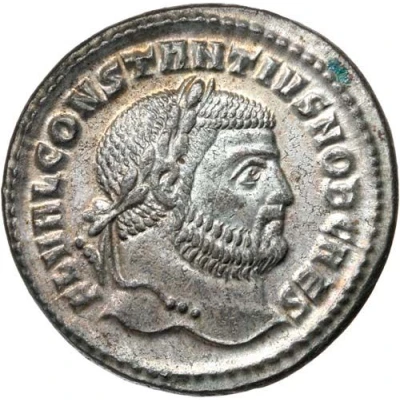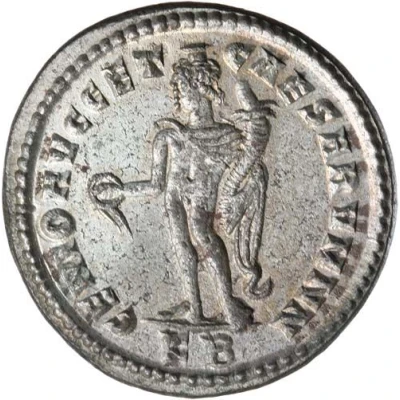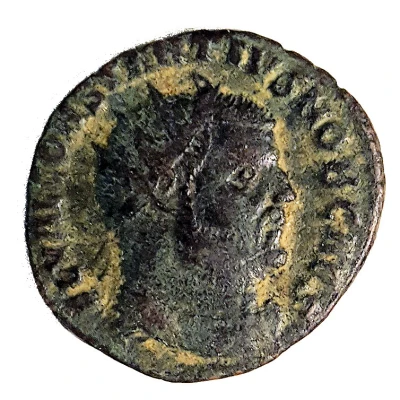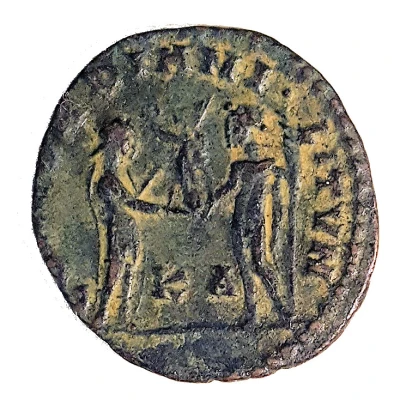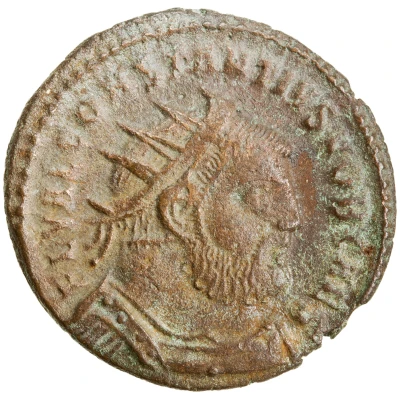
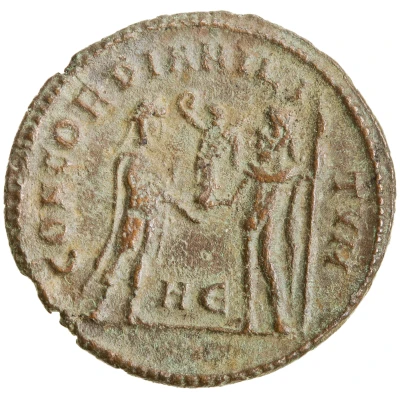

© American Numismatic Society (ANS)
Nummus - Constantius I as Caesar CONCORDIA MILITVM; Heraclea
| Bronze | 3.1 g | 21 mm |
| Issuer | Rome › Roman Empire (27 BC - 395 AD) |
|---|---|
| Emperor | Diocletian (Gaius Aurelius Valerius Diocletianus) (284-305) |
| Type | Standard circulation coin |
| Years | 295-296 |
| Value | Nummus / Follis (¼) |
| Currency | Argenteus, Reform of Diocletian (AD 293/301 – 310/324) |
| Composition | Bronze |
| Weight | 3.1 g |
| Diameter | 21 mm |
| Shape | Round (irregular) |
| Technique | Hammered |
| Orientation | Variable alignment ↺ |
| Demonetized | Yes |
| Updated | 2024-10-05 |
| Numista | N#428931 |
|---|---|
| Rarity index | 95% |
Reverse
Constantius Chlorus, draped, cuirassed, standing right, receiving small Victory on globe from Jupiter; Jupiter, standing left, leaning on sceptre with left hand.
Mintmark in middle field.
Script: Latin
Lettering: CONCORDIA MIL-ITVM
Unabridged legend: Concordia Militum.
Translation: Concord of the Soldiers.
Interesting fact
The Nummus coin was used during a time of significant economic and political change in the Roman Empire. The coinage reform of Diocletian, which took place in 296 AD, introduced a new system of coinage that replaced the old system of bronze and silver coins with a new system based on gold, silver, and bronze coins. The Nummus coin was one of the coins introduced during this reform, and it was used as a low-denomination coin for everyday transactions. Despite its low value, the Nummus coin was made of bronze, which was a valuable metal at the time, and it featured an image of Constantius I as Caesar, indicating his importance in Roman politics.
